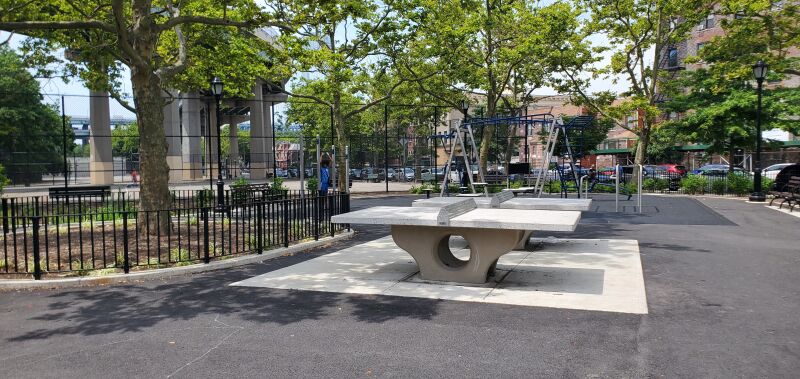John J Carty Park
John J. Carty Park
What was here before?
This site, once part of Fort Hamilton, was completed in 1831 and named after Alexander Hamilton (1755-1804). During the Civil War, the fort protected the harbor against possible attacks from the Confederate Army and served as a prisoner-of-war camp. During both World Wars, the fort functioned as a mobilization center to prepare soldiers before deployment overseas and the last coastal defense gun was finally removed in 1948. In the 1960s, part of the fort was demolished to make way for green space and the Verrazano Narrows Bridge. Today, Fort Hamilton is the only active-duty military post in New York City.
How did this site become a park?
The Triborough Bridge and Tunnel Authority developed the Verrazano Narrows Bridge (1965) and this park concurrently as part of a 1956 federal grant. The park was deeded to NYC Parks in 1990 from the National Parks Service.
At the northern end of the park is a flagpole dedicated to explorer Giovanni Di Verrazzano with an ornamental marble pedestal with circular relief sculpted by Albino Manca (1897-1976). The monument was dedicated in 1964.
In 2020, the tennis courts were reconstructed, and new seating areas were installed. In 2024 the playground was upgraded with new equipment, spray showers, and painted games.
Who is this park named for?
This park honors John J. Carty (1909-1970), a native of Bay Ridge, Brooklyn who lived a couple of blocks away and dedicated himself to New York City government for 32 years.
Born in Bay Ridge, Carty graduated from St. Francis College in downtown Brooklyn. After college, he taught English and Government at Bishop Loughlin Memorial High School in Fort Greene and coached the baseball and swimming teams. In 1938, Carty left his position as a teacher to join city government with the Municipal Civil Service Commission.
Carty was appointed to the Bureau of Budget in 1952 and in 1962, he became First Deputy Comptroller before receiving a bronze medal from the Citizens Budget Commission for career service a year later. In 1966, Mayor John V. Lindsay (1921-2000) appointed Carty to a 21-man commission established to work with private companies to secure additional industry for the city and specifically for the Brooklyn Navy Yard.
In August of 1967, The New York Times published John J. Carty’s letter to the editor defending the Comptroller’s Office against allegations by The Times that his office had inefficiently managed funding for Flushing Meadows Corona Park. Based on his evidence, it became evident that the Comptroller had no control over the funding for that project. When John J. Carty died in December 1970, Mayor Beame said, “he would probably have been selected by his fellow professionals in government as one of the greatest urban experts and public servants in the history of this city”.
Check out your park's Vital Signs
Clean & Safe
Green & Resilient
Empowered & Engaged Users
Share your feedback or learn more about how this park is part of a
Vital Park System







